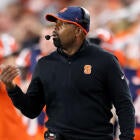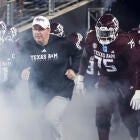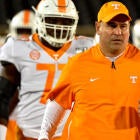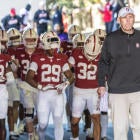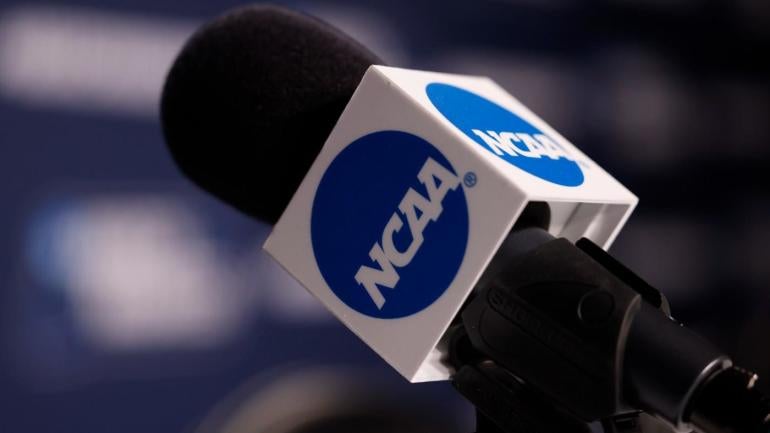
Though discussions are ongoing, specific transfer windows to address the unsettled one-time transfer climate are unlikely to be approved by the NCAA this week, sources tell CBS Sports. Resolution of tremendously complicated issue hangs in the balance with various committees scheduled to meet this week at NCAA headquarters in Indianapolis.
"Other than bringing it up in concept form, I doubt that the [NCAA] Council takes any action," said West Virginia athletic director Shane Lyons, current chairman of the council, which holds primary legislative authority for Division I athletics.
More likely is an adoption of transfer windows later this summer as the powerful Transformation Committee considers deregulation of the NCAA as a whole.
"The deregulation of transfers compounded with what [name, image and likeness] evolved into is creating a lot of stress in the system," said a source close to the committee. "On top of that, the NCAA not enforcing inducements and tampering [is an issue]. That has been an ongoing discussion."
This week's council meeting was the next opportunity to amend what has been a chaotic first year of the one-time transfer exception that was implemented for the 2021-22 academic year. However, the committee assumed oversight of the transfer issue as part of its duties since early this year.
That committee has an Aug. 1 deadline to begin a sweeping remodeling of the NCAA along with the implementation of a new constitution.
That has added another layer to the highly-charged transfer issue. In the first year of the one-time transfer rule, coaches and administrators alike balked at the near-endless focus on the transfer portal, which unlike free agency in professional sports could be entered and exited at nearly any time.
The initial deadline for undergraduate transfers entering the transfer portal was May 1. That basically allowed a nine-month window for players to transfer after the one-time transfer rule was adopted on Aug. 1, 2021.
The American Football Coaches Association has recommended a pair of transfer "windows" that would allow players to move between teams at defined periods of time while giving coaches more certainty over recruiting and roster construction.
In May, the NCAA Football Oversight Committee adopted the AFCA recommendations for those shorter windows. The longest of those options would last approximately two weeks each, first from April 15 until May 1 and then again from the last Sunday of November until the start recruiting's early signing period (mid-December). Another proposed version of the second window would be staggered by team for a five-day period following their respective last games of the season.
Typically, the NCAA Council would consider the Oversight Committee's recommendation; however, recruiting is tied so closely to deregulation of the NCAA that the Transformation Committee has assumed supervision on the issue.
AFCA executive director Todd Berry foresees "tweaks" to his organization's proposal. As a trade association, the AFCA has no official legislative power.
"My gosh, what we're trying to do is simplify some of this stuff," Lyons said, "As opposed to 'five days after your regular season, after your bowl game.' It's kind of like, 'What?' I think it has to be as simple."
There are potential legal liability considerations tied to the transfer windows, Lyons said. Carving that nine-month transfer period down to a couple of months could raise concerns.
"There was some potential legal risk," Lyons said. "That's why it got kicked back to the Transformation Committee because of [potential] antitrust [violations]."
This week's meetings are the next opportunity to change the recruiting calendar after the council last month eliminated the 25-man annual signing limit in football. For the next two years, programs only have to adhere to the overall 85-man scholarship limit. The move was made, in part, to address programs that had been raided by transfer portal departures.
As of late April, the number of football players signed out of high school had decreased 20%. Meanwhile, the number of FBS transfers had doubled since implementation of the one-time transfer rule last August.
"I think all of us realized we were going to get to a place where this is the end result," said Berry of the resulting chaos. "It's hard to reign things in. Everything, quite honestly, this was the expected outcomes from our coaches' standpoint. I don't think any of our coaches were surprised."
Deregulation by the Transformation Committee is expected to include massaging the transfer windows along with deciding what constitutes Division I membership. Also under consideration is the role NCAA enforcement will play in the future. Neither membership nor enforcement are not expected to be completed by that initial Aug. 1 deadline.
"It's probably going to take a year and half based on past history to get those things to where it's functional for everybody," Berry said.
![[object Object] Logo](https://sportshub.cbsistatic.com/i/2020/04/22/e9ceb731-8b3f-4c60-98fe-090ab66a2997/screen-shot-2020-04-22-at-11-04-56-am.png)









